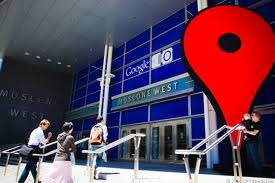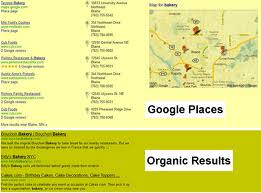In 2011, Google unveiled major changes in the way it indexes and ranks sites on its results pages. This just demonstrated how important it is to keep learning all the time if you intend to optimize your website for better search engine rankings. Google Local Optimization is a game that evolves over time, and you need to stay up-to-date if you intend to stay effective. This article will show you some optimization strategies that will still get results.
Optimizing for Google Local Optimization
 One of the best new trends in Google Local Optimization today is tight focus. Webmasters are discovering that it’s more productive to concentrate on very specific keywords rather than duke it out for coveted, highly competitive general ones. For instance, you can use geographic qualifies to narrow down your keywords. “Plumbing repairs in Akron” is a much less competitive keyword phrase than “plumbing repairs.” Assemble a menu of more specific keywords that you want to rank highly with.
One of the best new trends in Google Local Optimization today is tight focus. Webmasters are discovering that it’s more productive to concentrate on very specific keywords rather than duke it out for coveted, highly competitive general ones. For instance, you can use geographic qualifies to narrow down your keywords. “Plumbing repairs in Akron” is a much less competitive keyword phrase than “plumbing repairs.” Assemble a menu of more specific keywords that you want to rank highly with.
Picking the right keywords means getting comfortable with Google’s AdWords keyword tool. It can give you a rough idea of which terms get more or less traffic. Take the tool’s traffic figures with a grain of salt, though; they rarely reflect the actual numbers you’ll see with much accuracy. They are a decent yardstick you can use for comparing different keywords, though. You’ll want to make experience the final judge of which keywords are right for you. Try out multiple phrases and see which ones draw traffic in the real world.
Google Local Optimization Tactics
While the traditional “under the hood” Google Local Optimization tactics like inserting your keywords into HTML tags still have a positive effect, today you’ll want to spend more of your time on content generation. Fresh, readable content that’s relevant to your keywords and also interesting to your visitors is the way forward. You can use this content to beef up your own website and also send it out across the Internet to build backlinks. There are many directory sites and link-building services that will help you spread your content around. An important note: Content that’s posted on your own site should always have priority. Make it as high-quality as possible, and don’t reuse your premiere content for off-site link-building.
It seems that some of the changes in Google Local Optimization are cyclical. Several years ago, professional optimizers were great fans of getting keywords into page URLs. Then the practice fell out of favor. Today it’s on the rise again, and a little attention paid to your page addresses can have a big effect. If your current web design procedures produce a lot of pages with dynamic URLs or meaningless numbered addresses, shift to hand-crafted keyword-bearing URLs wherever possible. Keyword use in addresses is also important on a larger scale: If at all possible, your website’s domain should include popular keywords that are appropriate for your content.
This article just gives you a general idea about the way the Google Local Optimization environment changes over time. It’s always difficult to discuss specifics, because you don’t want to pick up advice that’s too old to be relevant. You should dedicate yourself to keeping tabs on the latest Google Local Optimization news to ensure that your techniques remain effective. Keep a finger on the pulse of optimization and you can be confident that your Google Local Optimization know-how will stay up-to-date.

